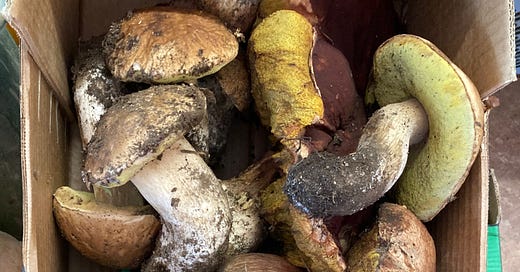A fine load of porcini from Monte Amiata
For a while it really looked as though there would be no funghi at all this year. No mushrooms? Niente funghi? All over Italy cooks wrung their hands: Mushrooms, wild or cultivated (but preferably wild), fresh from the forest, preserved in oil, or dried for winter storage, are as much a staple in many traditional…
Keep reading with a 7-day free trial
Subscribe to On the Kitchen Porch to keep reading this post and get 7 days of free access to the full post archives.




